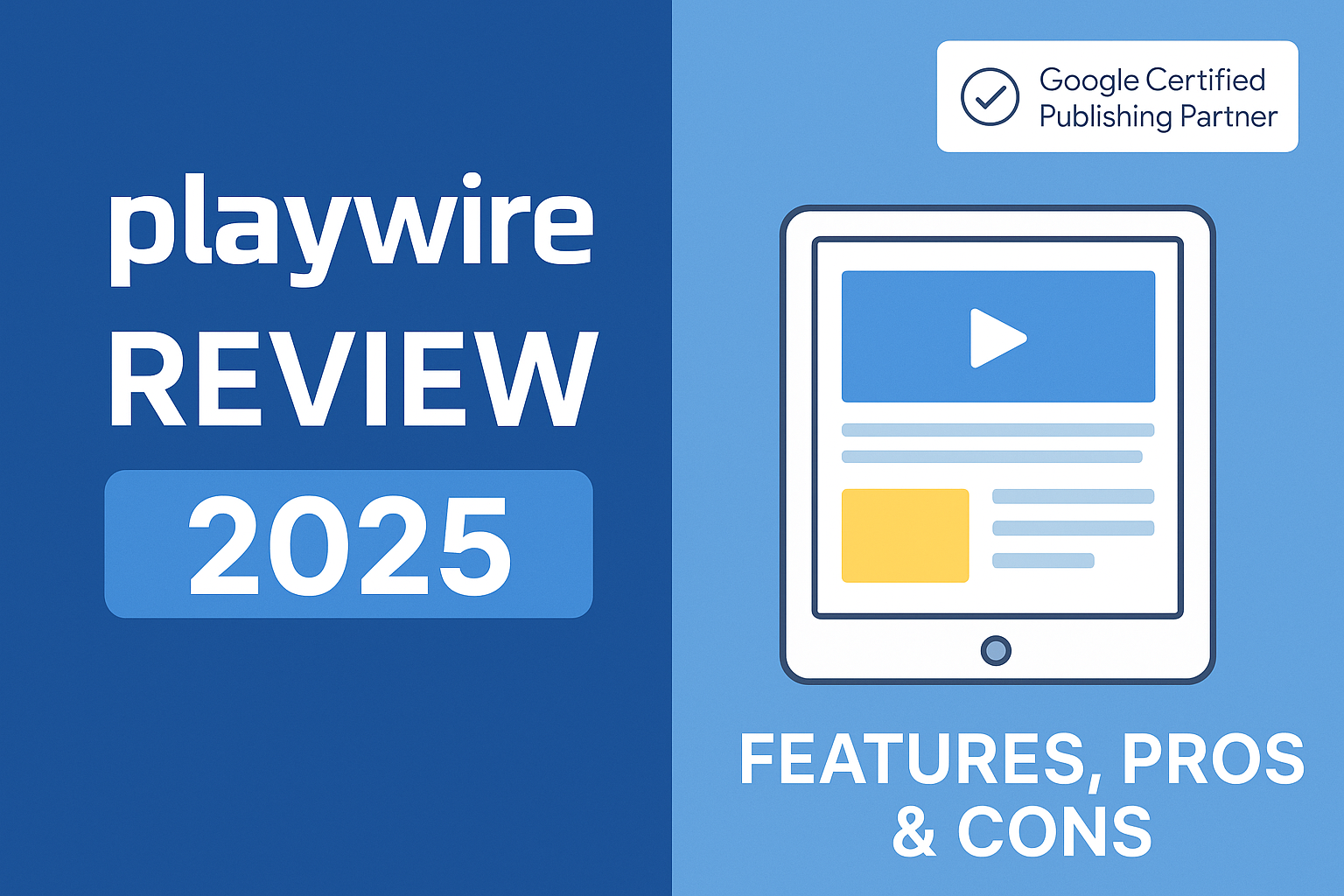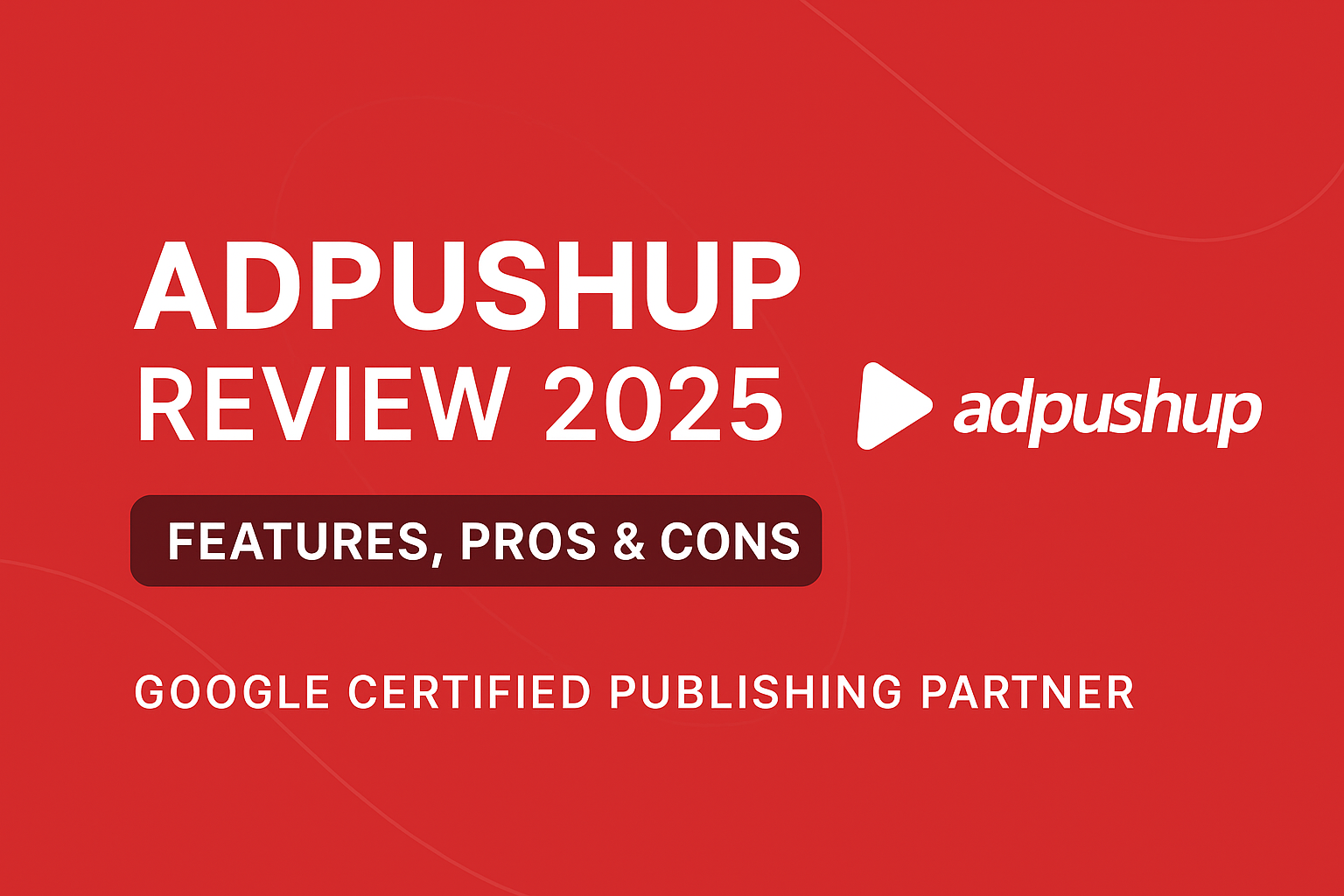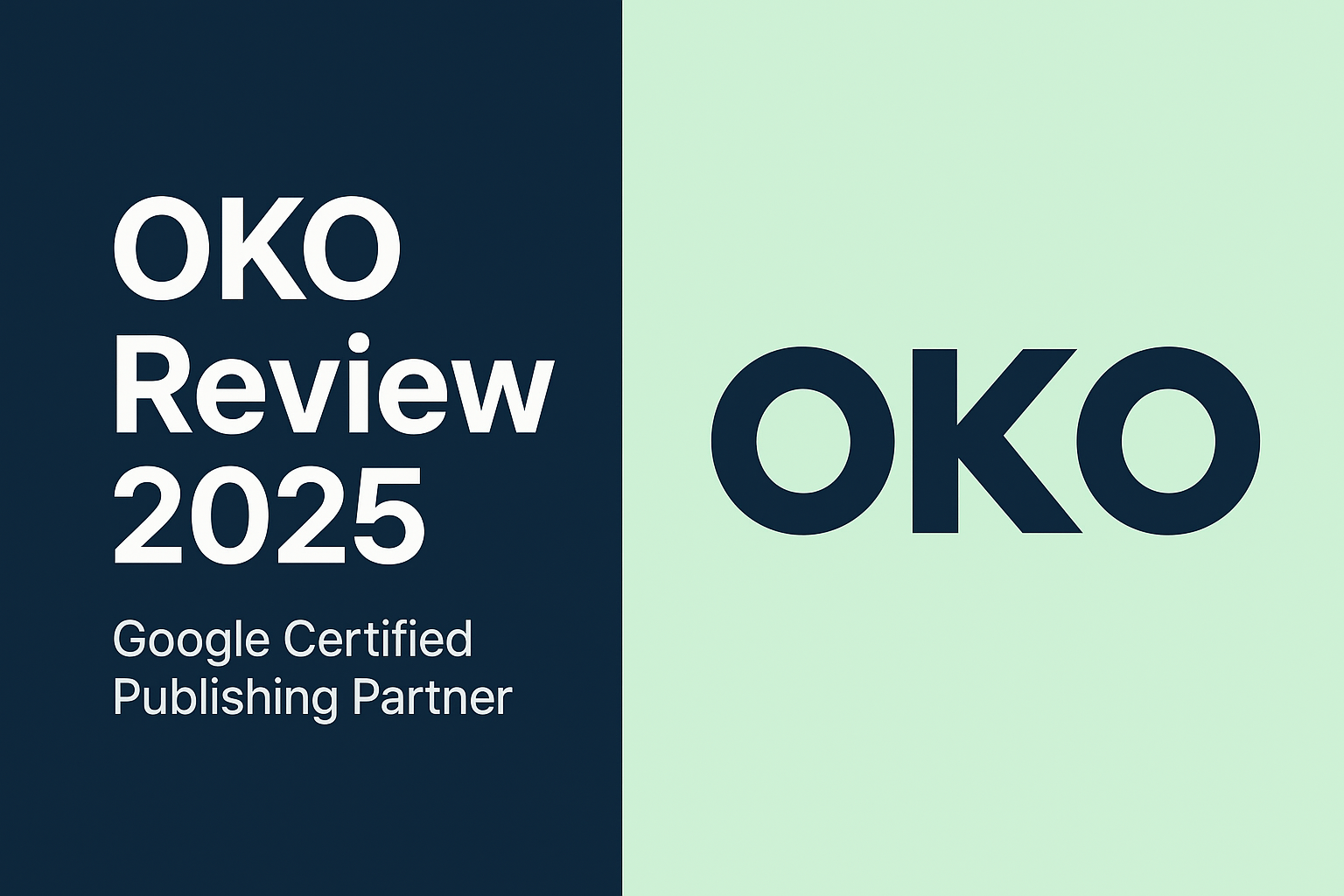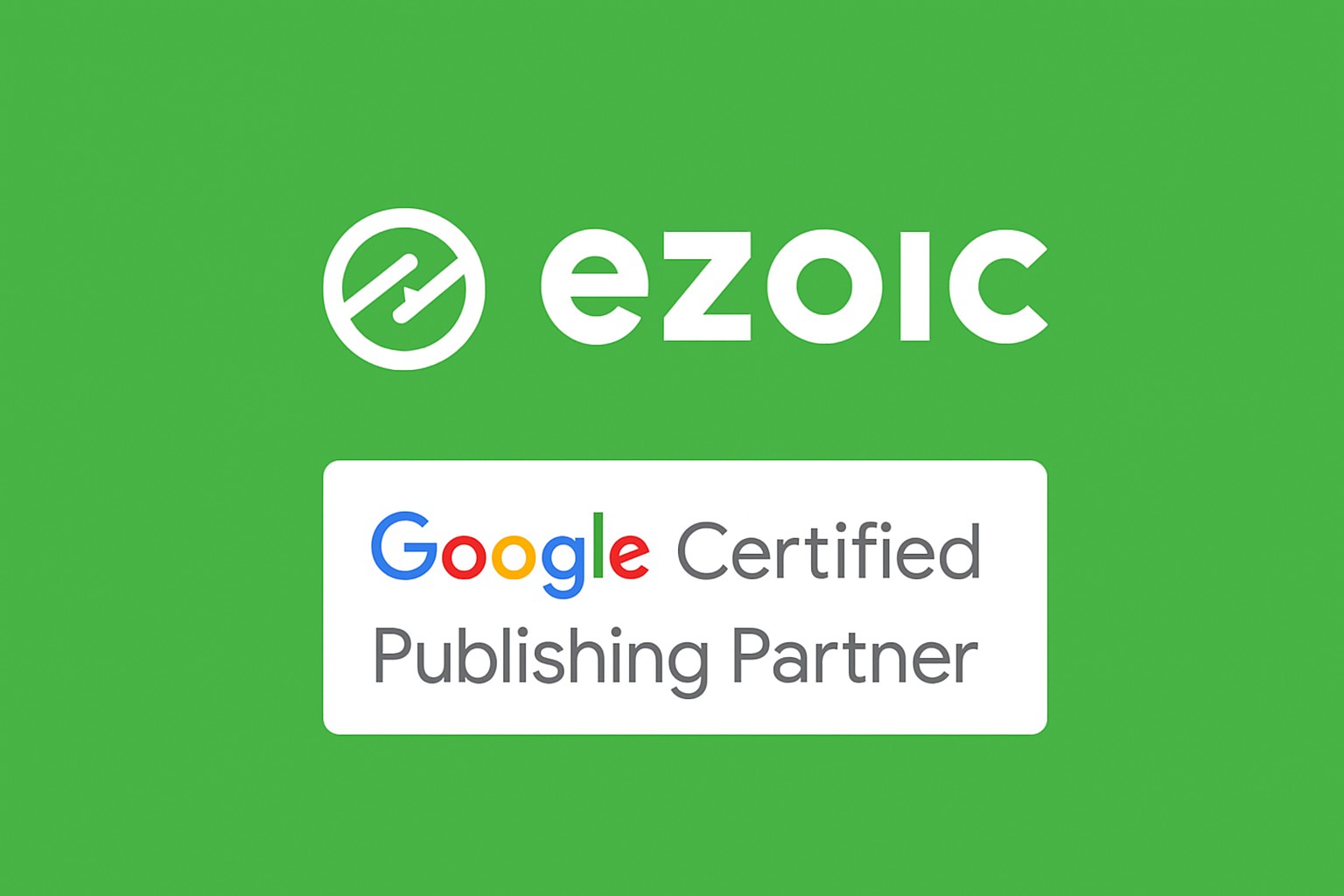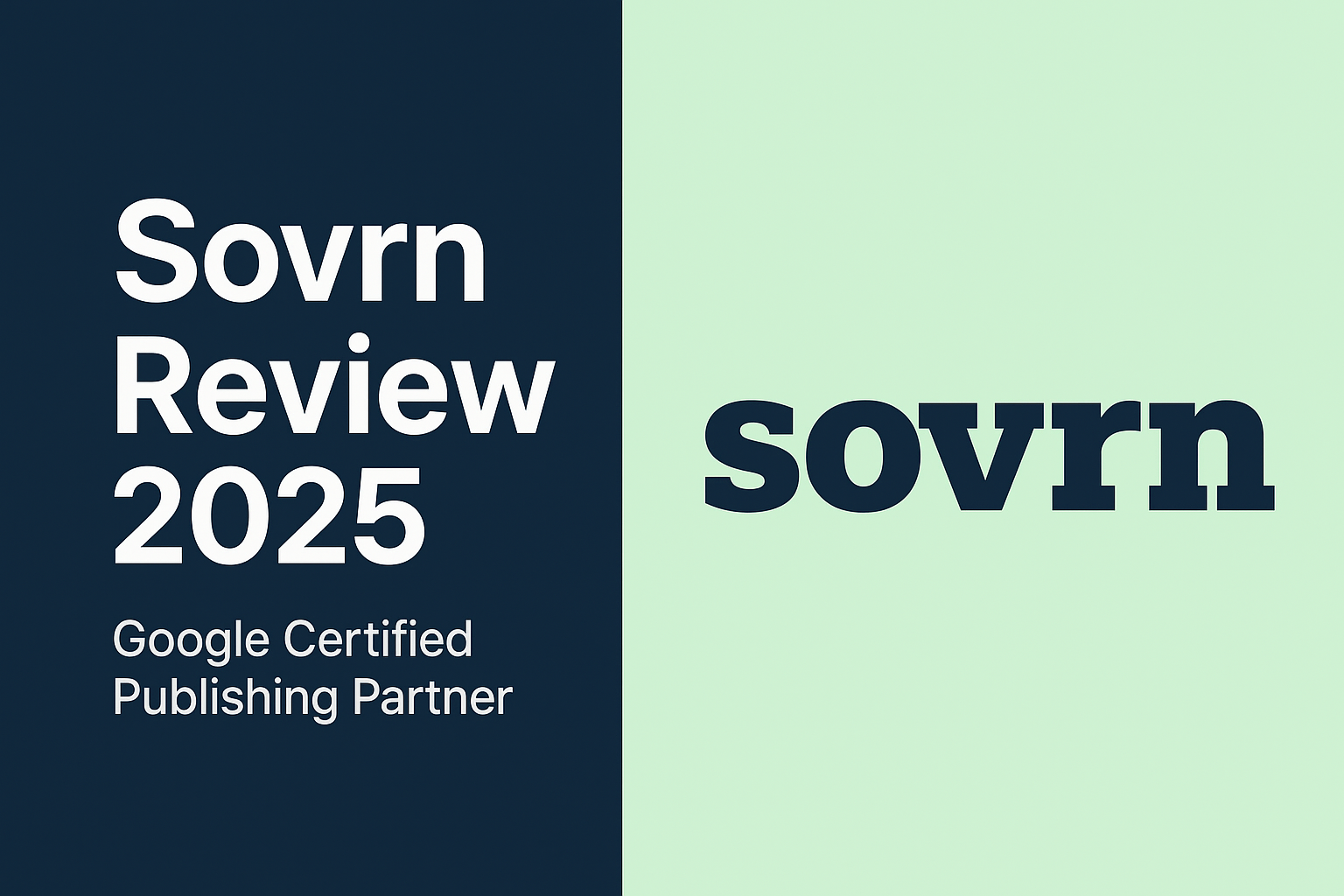Playwire Review 2025: Is This Google Certified Publishing Partner the Right Ad Monetization Solution?
If you’re a content creator, blogger, video publisher, or run a website that depends on ad revenue, you’ve likely come across various monetization platforms promising revenue growth. One name that often appears is Playwire. In this review, we’ll dig deep into what Playwire offers, what its GCPP status means, the strengths & challenges, real‑world outcomes, and whether it’s a good idea for your site.
What Is Playwire?
Playwire is a monetization & ad tech company that helps publishers make more revenue through display ads, video ads, streaming, apps, and related ad formats. Some key points:
- They handle over 450 websites globally, serving billions of ad impressions (video + display). PRWeb
- Their offerings include multiple ad formats, a custom video player, creative in‑house teams, machine‑learning‑driven intelligence, and direct sales + programmatic demand. PRWeb
- They are focused not just on placing ads, but optimizing layouts, improving ad quality, ensuring better fill rates, improving user experience, etc. Playwire
Table of Contents
What Is GCPP / “Google Certified Publishing Partner” & Does Playwire Have It?
“Google Certified Publishing Partner,” sometimes abbreviated GCPP, is a designation by Google given to companies that meet certain criteria in ad monetization, policy compliance, technical capability, and support for publishers. Being GCPP means better access to Google’s tools, possibly early/beta features, help with policy infractions or technical issues, etc.
According to Playwire’s FAQ, they state:
“We … are a Google Certified Publishing Partner” which grants them “premium access to Google’s wide array of tools … direct communication … access to alpha and beta products” among other benefits. Playwire
So, yes, Playwire is GCPP, meaning they passed Google’s vetting for publishers’ partner‑program, and have some advantages because of it. Playwire
Key Features & Offerings of Playwire
Here are the main tools, services, and strengths that Playwire provides:
| Feature | What It Delivers | Why It Matters |
|---|---|---|
| RAMP (“Revenue Amplification”) | Combines direct ad sales, client‑ & server‑side bidders, and predictive analytics to improve overall ad revenue. | More sources competing for your ad inventory generally results in higher CPMs / RPMs. |
| Custom Video Player & Video Ads | They have their own video player, support video ad formats, OTT/streaming, and support Google’s IMA SDKs. | Video generally commands higher ad rates, but also demands better user experience & tech. |
| Display Ad Optimization | Various ad formats (banners, sidebars, in‑content, bottom rails, sticky, etc.), layout optimization, balancing ad count vs UX, etc. | Crucial for viewability, avoiding ad fatigue, and ensuring good performance & SEO. |
| Google Ad Manager (GAM) Enhancements | Playwire helps publishers who already use GAM (or similar) to get more out of it — by better targeting, richer audience segmentation, etc. Being GCPP gives them extra access / capabilities here. Playwire | If you use GAM already, this means Playwire can help optimize what you’re already doing rather than replacing everything. |
| Revenue Share Model | Their model is based on revenue share. They claim this aligns incentives: as you earn more, they earn more. Playwire | Many publishers prefer this over fixed‑fee models because it motivates the monetization partner to continuously optimize. |
| Support, Testing & Analytics | Case studies show they perform detailed audits, run tests (ad unit changes, pricing floors, layout changes) to improve CPMs/RPMs. For example, in a case with Raider.IO, Playwire tested on 40% of traffic before full rollout, and achieved ~50% ad revenue increase over some months. Google | Incremental changes and testing help balance revenue and user experience; avoids “drastic” changes that hurt UX or traffic. |
Real‑World Outcomes & Case Studies
Some of Playwire’s performance examples:
- Raider.IO: After working with Playwire (using custom ad units, direct sales, pricing floors, etc.), they saw a 50% increase in ad revenue within a few months (after piloting on part of traffic). Google
- Other publishers reported doubling revenue or getting 1.5–2× growth when switching from basic AdSense to Playwire, thanks to better ad quality, better demand, more optimized ad units. Playwire
- Platforms with video & streaming saw benefits from Playwire’s video ad capabilities and better integrations. PRWeb
Pros & Cons of Playwire
As with all monetization partners, there are trade‑offs. Here are advantages and challenges to weigh.
Pros
- Strong Monetization Potential
With multiple demand sources, predictive analytics, video + display optimization, publishers often see better RPMs vs basic ad networks. - Full‑Stack Support & Expertise
Because Playwire handles many parts: ad tech, sales, optimizations, layout advice, video player, etc. Less load on publisher to do everything themselves. - Better Ad Quality and Brand Advertisers
Using direct sales and access to premium advertisers often improves ad quality (less “junk ads”), which can enhance user trust and retention. - GCPP Status Perks
Access to Google tools, possibly early features/bug‑fixes, advice / support on policy issues, etc. This can reduce risk for the publisher. - Customization & Flexibility
They appear able to work with publishers of different sizes, offering tailored ad layouts, optimizing for viewability, testing, etc. Google
Cons / Potential Weaknesses
- Revenue Sharing Means Cost
Because Playwire works on a revenue share model, you give up a portion of earnings — you need to check how much share and whether the uplift covers that. - Setup & Technical Overhead
Incorporating video players, optimizing layout, integrating header bidding / direct deals / testing requires technical resources. Some publishers may find it complicated or resource‑intensive. - Ad Density vs User Experience
Higher monetization often means more ad units, more frequent video or dynamic ad units. If not done carefully, could hurt page speed, UX, bounce rate, and thus SEO. Playwire emphasizes balancing this, but publishers need to monitor. - Minimum Thresholds / Requirements
Although not always public, very small sites or those with very low traffic may not get best rates, premium advertisers, or might have slower onboarding. - Transparency & Reporting Complexity
For publishers used to simple dashboards (like AdSense), the richer analytics / multiple sources can get overwhelming. Need more analytics sophistication to interpret.
Is Playwire Right for You?
Here are factors to consider to decide if Playwire could be a good monetization partner for your site/app/video content:
- Traffic Volume & Quality: If you have a decent amount of traffic (especially from premium geographies) and/or video content or streaming usage, Playwire’s video + display mix can benefit you.
- Willingness to Invest in Optimization: If you or your team can dedicate some time or technical resources to implementing recommended layouts, doing A/B tests, managing video content, etc., then you’ll be able to get the most from Playwire.
- Desire for More Control & Premium Demand: If you want more control over ad types, better ad quality, higher CPMs, and are dissatisfied with basic ad networks, then Playwire may be worthwhile.
- Tolerance for Revenue Share Trade‑Offs: Evaluate whether revenue share, cost of implementation, and possible initial drop (if any) will still leave you ahead in the longterm.
- User Experience Matters: If your audience is sensitive to page speed, UX, ad intrusion, etc., choose a partner who takes care to avoid negative impacts. Based on case studies, Playwire seems conscious of this, but you’ll need to monitor.
Final Verdict
Overall, Playwire is a strong contender for publishers who want to go beyond simple ad network/DSP solutions and are ready to work with a partner for optimization. Its GCPP certification adds credibility and brings advantages.
If you’re a site with reasonable traffic, ideally with video or streaming content, and you’re willing to put in some work (or have a team) for layout, ad type testing, etc., then Playwire is likely to deliver better revenue than more basic setups.
If you’re smaller, just starting, or you want minimal hassle and low overhead, then simpler ad networks might suffice until you grow enough to make Playwire’s features pay off.
Tips for Getting the Most From Playwire
- Start with a pilot test: maybe apply some of their changes on a small portion of traffic first (as seen in Raider.IO example).
- Monitor metrics like viewability, ad load time, bounce rate, revenue per visitor.
- Optimize ad units wisely—choose formats that perform well in your content context.
- Pay attention to ad quality and brand safety to avoid hurting user trust.
- Use video and streaming options if relevant: video often has higher CPMs.
MORE LINKS:
1.https://reviewall.in/2025/09/14/adpushup-review-2025-gcpp/
